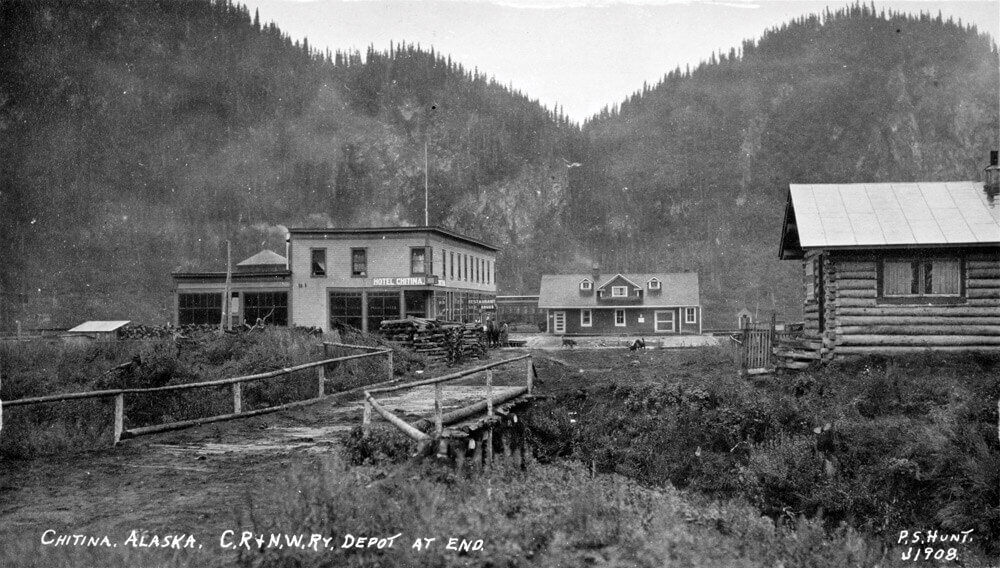
History
Chitina — pronounced (CHIT-nuh)
Population
110 (2004 est.)
Incorporation Type
Unincorporated
Borough Located In
Unorganized
Taxes
No taxing authority
Chitina Native Corporation first incorporated in the State of Alaska on September 11, 1973. Chitina Native Corporation’s first shareholder annual meeting was called to order by President Walter Charley on March 16, 1984 . Some past Presidents include: Harry Billum, John Billum, Henry Bell, Earl Bell, Mildred Buck, Martin Finnesand, Loretta Sternbach, Marlene Johnson, Joe Hart and Joyce Clark. Chitina Native Corporation shareholders are primarily residents or descendants of the Native Village of Chitina.
The Native Village of Chitina is the locally federally recognized tribe; out of the population count of 110, 48.8% are Alaska Native or Native American’s. Most of the Native residents are involved in subsistence activities year round, such as fishing, gardening, picking berries and herb gathering. During the summer months Chitina brings in large numbers of Alaskans for subsistence dipnetting for salmon on the Copper River.
Chitina is famously known from the exploration of the Copper River Northwestern Railway and Copper Mine development in Kennicott, which put Chitina on the map. Before Chitina was discovered by the non native population in the late 1800’s and up through the early 1900’s Chitina had through the years many admirable local natives, to name a few.
Chief Nicolai
Born around 1840, Nicolai was of the Ahtna leading Chiefs from 1884 until his death around 1900. Nicolai is known for assisting several early exploration parties. His name was used in honor in naming Nikolai Creek and Nikolai Butte.
Chief Hanagita
Chief Nicolai’s brother and one of Ahtna’s most important twentieth century chiefs, Hanagita became the head chief of the lower Ahtna following the death of his brother, Chief Nicolai around 1900. The Date of Hanagita’s death is unknown, but may have been in around 1910. His name was used in honor in naming Hanagita Peak and Hanagita River.
Chief Eskilida
Chief Nicolai’s youngest brother. Eskilida lived in the village of Tsenghaax on the Copper River and his subsistence sites on Strelna. It is believed that Eskilida had died from the influenza epidemic of 1918.
Chief Goodlataw
Born about 1875, Goodlataw was Chief Nicolai’s maternal nephew. He became the primary leader of the lower Ahtna following the death of Nicolai’s youngest brother, Chief Eskilida, in 1918. The USGS named Goodlata Peak in his honor.
Cap. Goodlataw
The son of Chief Goodlataw and the brother of Joe Goodlataw. Goodlataw worked for the Kennicott Mines in the late 1920’s as a jackhammer operator. Goodlataw was reported missing in May of 1932. His body was eventually found buried in Robert L. Reed’s Chitina garden. Reed was charged with his murder and tried in Valdez, but was inexplicably acquitted.
Billum, Doc.
Born in the Copper Basin about 1844, Billum, an Ahtna “sleep doctor” or shaman who lived near the mouth of the Tonsina River, provided prospectors with some of their earliest accurate information about copper deposits in the Kotsina-Kuskulana district. One such property was the so-called Billum lode, which was probably the Copper Creek deposit later known as the Mullen. Beginning about 1901, Billum operated a ferry across the Copper River near his home.

